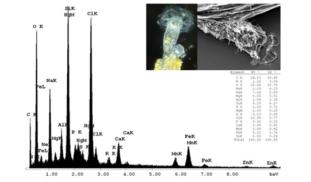20
0
0
Like?
Please wait...
About This Project
University of Massachusetts Lowell
Energy dispersive x-ray spectroscopy (EDS) is a method for analyzing the elemental (chemical) composition of synthetic and natural structures, and has been useful in identifying trace metals in forensics and ecotoxicology. To date, it has never been applied to detect trace elements in invertebrate secretions. Here, I describe a study that uses EDS to characterize the protective secretions of sessile rotifers and to determine if metal pollutants are incorporated into their secretions.

Browse Other Projects on Experiment
Related Projects
How do polar bears stay healthy on the world's worst diet?
Polar bears survive almost entirely on seal fat. Yet unlike humans who eat high-fat diets, polar bears never...
Uncovering hidden insect diversity associated with a likely undescribed gall-forming midge
Does a likely undescribed species of gall-forming midge (pers. comm. Ray Gagné) on Eriodictyon plants (Yerba...
Macrofungi of the California archipelago
The eight islands of the California Archipelago are a well-studied biodiversity hotspot — but we know almost...

